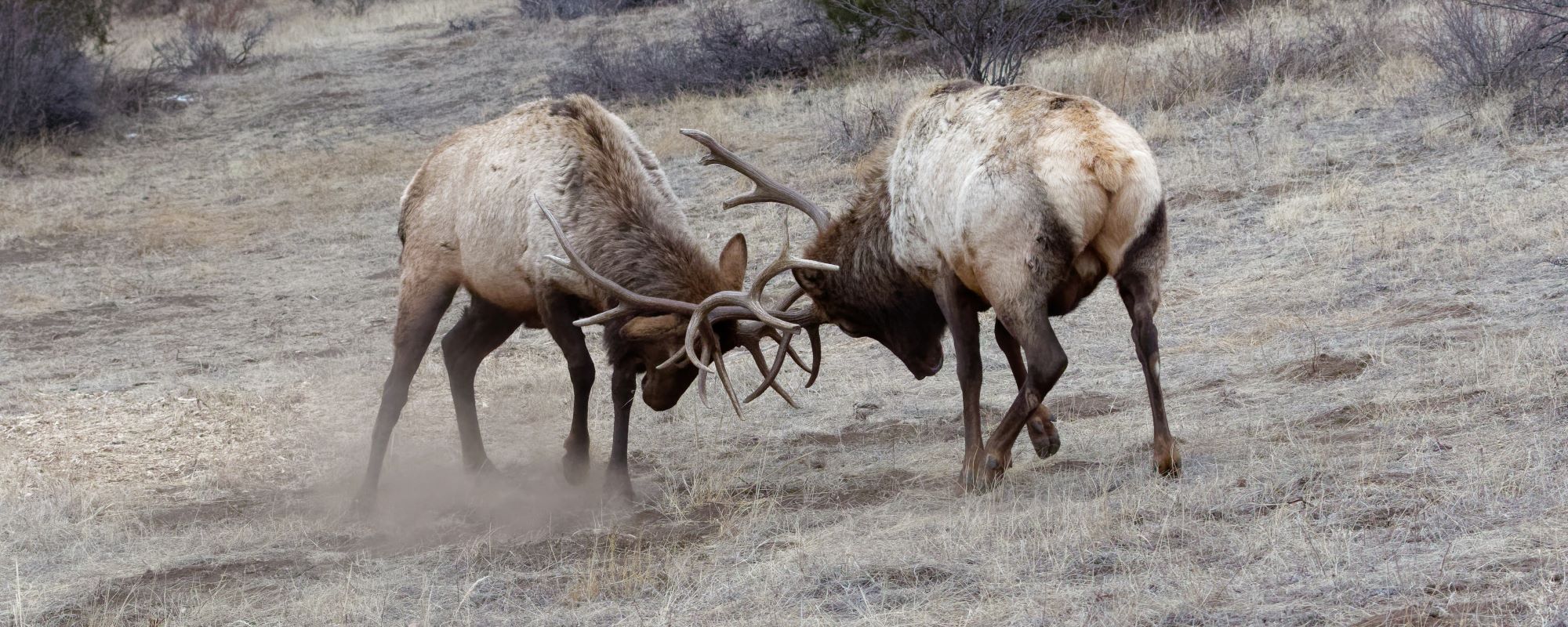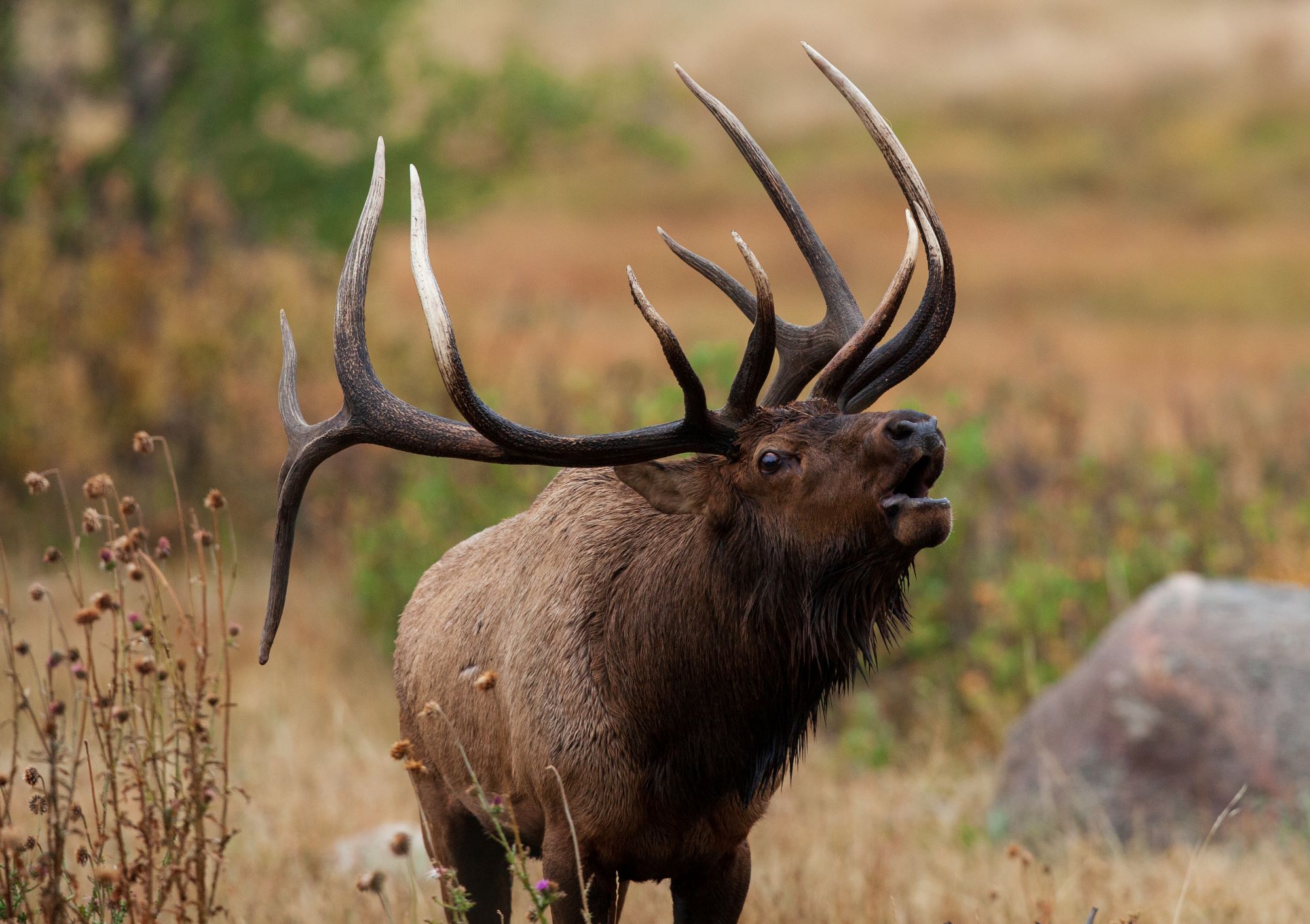
Rocky Mountain Elk in Utah
Elk in Utah, primarily the Rocky Mountain elk (Cervus canadensis nelsoni), are a significant and majestic component of the state's wildlife. These large ungulates are found throughout Utah, with their distribution spanning from the high mountain ranges to the open sagebrush valleys, though they are most commonly associated with the forested habitats of the Uinta and Wasatch Mountains.
Physically, elk are impressive: adult males, known as bulls, can weigh between 700 to 1,000 pounds, while females, called cows, are smaller, weighing between 500 to 600 pounds. Elk are known for their striking appearance, particularly the bulls with their large, branching antlers, which they shed and regrow annually. Their coats are typically a light brown, with a darker mane and a characteristic pale rump patch.

The diet of elk in Utah is varied, depending on the season and available resources. In the warmer months, they graze on grasses, forbs, and shrubs, while in the winter, they switch to woody plant material, such as aspen and willow bark. This diet shift is crucial for their survival, especially in the mountainous regions where deep snow can limit access to ground vegetation.
Elk behavior is also seasonally driven. During the fall mating season, known as the rut, bulls gather cows into harems and engage in vocalizations called bugling – a distinctive, high-pitched call that can carry for miles. This behavior is accompanied by displays of dominance, such as antler wrestling between bulls. The rut is a highlight for wildlife enthusiasts, offering a chance to observe these animals' social dynamics.
Post-rut, elk often form larger herds for the winter months, seeking areas with less snow and more accessible food. These wintering grounds are crucial for their survival, and the migration to and from these areas is an important aspect of their life cycle.
Elk populations in Utah are managed by the Utah Division of Wildlife Resources, which employs a combination of strategies including habitat management, research, and regulated hunting. Hunting is an integral part of managing elk populations, helping to maintain a balance between the elk herds and their available habitat, while also providing recreational opportunities for residents and visitors.
Conservation efforts for elk in Utah also focus on habitat preservation and restoration. This includes managing forest health, maintaining open meadows and grasslands, and ensuring connectivity between different habitats, which is essential for their seasonal migrations.
Elk-human conflicts in Utah, such as crop depredation and vehicle collisions, are managed through various mitigation strategies. These include fencing, land-use planning, and in some cases, relocation of herds from areas where conflicts are high.
In summary, elk in Utah are a prominent and cherished part of the state's wildlife, admired for their size, beauty, and the ecological role they play. Their management is a complex task, balancing the needs of the elk with those of the environment and human interests. The continued presence of healthy elk populations in Utah's landscapes is a testament to successful wildlife management and conservation efforts in the state.